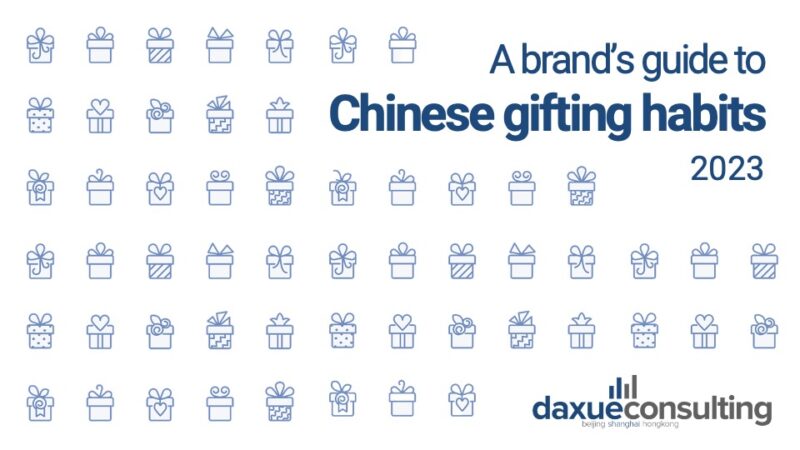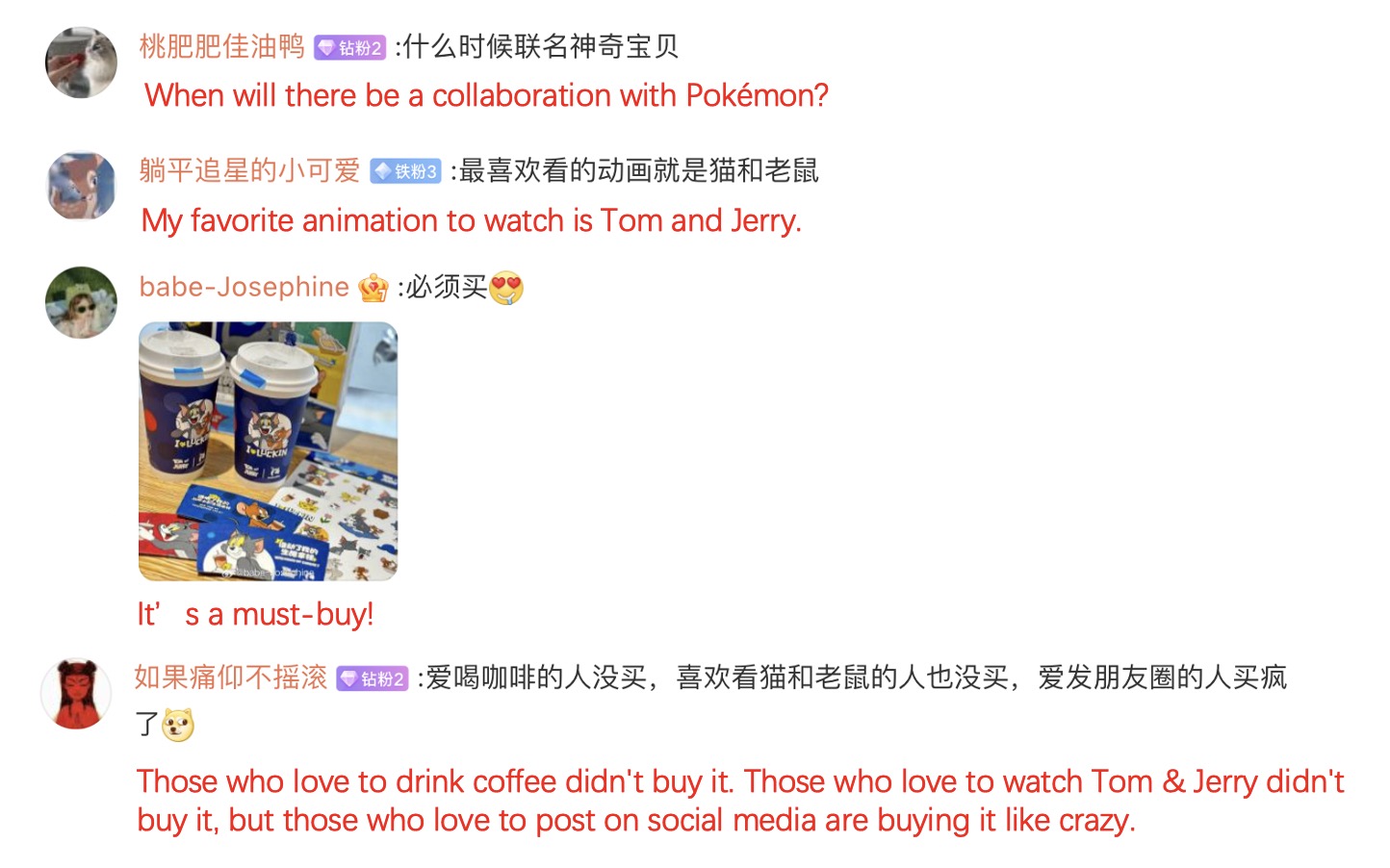The co-branded liquor-infused latte (酱香拿铁) by Luckin Coffee, one of China’s largest domestic coffeehouse chains, and Kweichow Moutai (贵州茅台), China’s high-end liquor brand, was sold over 5.42 million cups and generated more than 100 million RMB in revenue on the same day it was launched, creating quite a lot of social buzz on Chinese social media during the past month. Building on the sweeping success of the collaboration between the two business giants, Luckin Coffee unveiled a new partnership on October 9th, teaming up with the iconic American cartoon IP, Tom & Jerry (猫和老鼠), introducing a special edition of Mascarpone Latte coffee made of Denmark-imported Mascarpone cheese to enhance the milky flavor, which became a hot hit.
Download our guide to Chinese gifting habits

Netizens dream of nostalgic IP in co-branding collaborations
On Weibo, the hashtag #Luckin Tom & Jerry# (瑞幸 猫和老鼠) topped the hot topic chart and reached a remarkable 180 million views. This sparked a broader conversation around the question of #Are you inclined to buy products because they are co-branded# (你会为了联名而买单吗). According to a poll on this, 49% of the respondents voted for it, while 23% opposed it, leaving 28% of the respondents who indicated to base their decision on whether the co-branding fits their personal preferences. Under the hashtag, many netizens have expressed their interest in the animation Tom & Jerry and hope to see more collaborations with other IPs such as Slam Dunk (灌篮高手), Sailor Moon (美少女战士), and Pokémon (神奇宝贝).

Key implications for co-branded products in the Chinese market
Co-branding in the Chinese market comes with critical considerations. Firstly, the success of such partnerships hinges on their ability to create a buzz on prominent social media platforms, notably Weibo and Xiaohongshu. Leveraging trending hashtags and actively engaging with the audience on these platforms can significantly enhance the visibility of co-branded products. Secondly, cultural sensitivity is a crucial factor in co-branding strategies. It is essential to choose partner brands that align with local culture and preferences. For instance, Luckin Coffee’s collaboration with Kweichow Moutai and the iconic Tom & Jerry, which also enjoys popularity in China, serves as a prime example of this cultural awareness.
Consumer sentiments and co-branded products: lessons from Luckin Coffee
- Luckin Coffee’s co-branded liquor-infused latte with Kweichow Moutai and its collaboration with Tom & Jerry generated remarkable success in China, resulting in substantial sales and social media buzz.
- Weibo users showed a strong affinity for nostalgic IP co-branding, with the #Luckin Tom & Jerry# hashtag reaching 180 million views. Consumer opinions on co-branded products were mixed, but the resonance with personal preferences was a key factor.
- Success in Chinese co-branding relies on social media visibility, such as Weibo, and cultural sensitivity. The partnerships with Kweichow Moutai and Tom & Jerry exemplify the importance of aligning with local culture and preferences.





